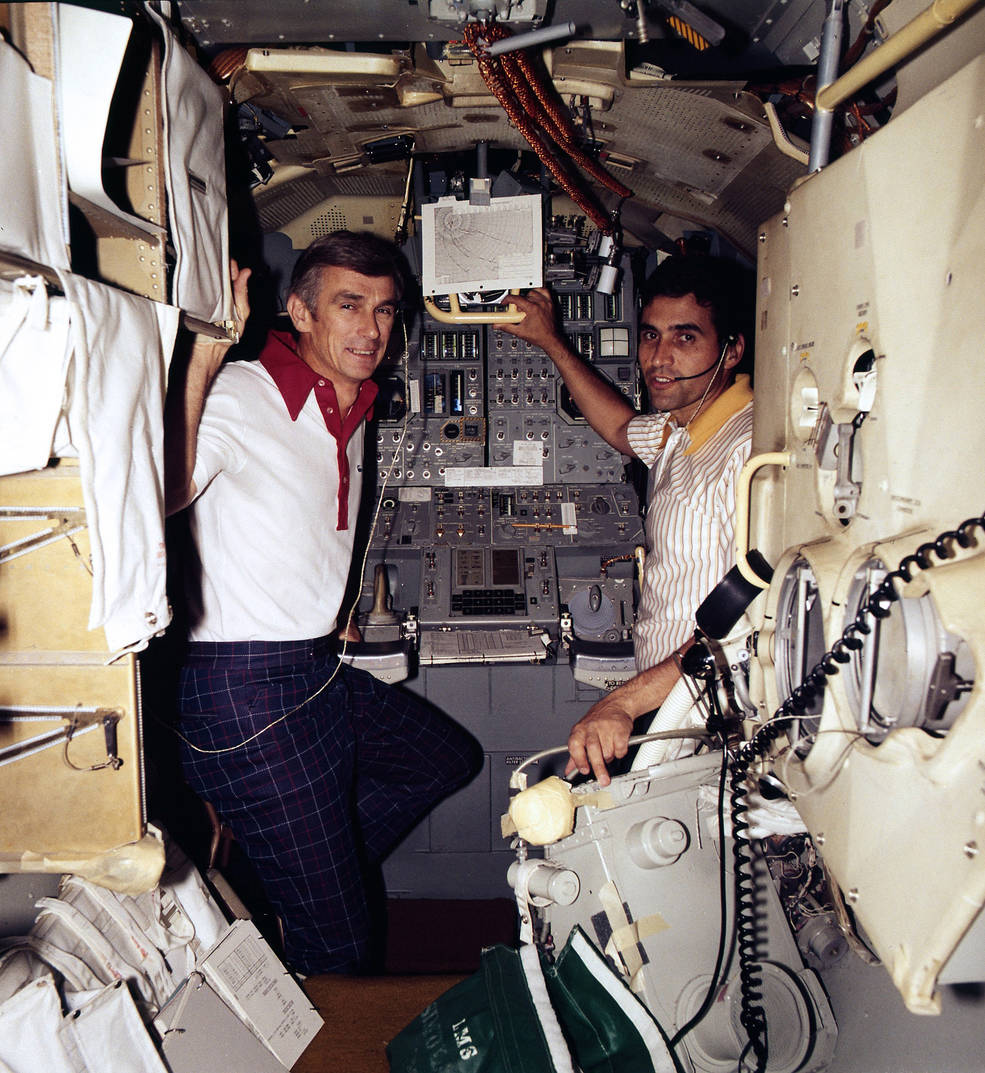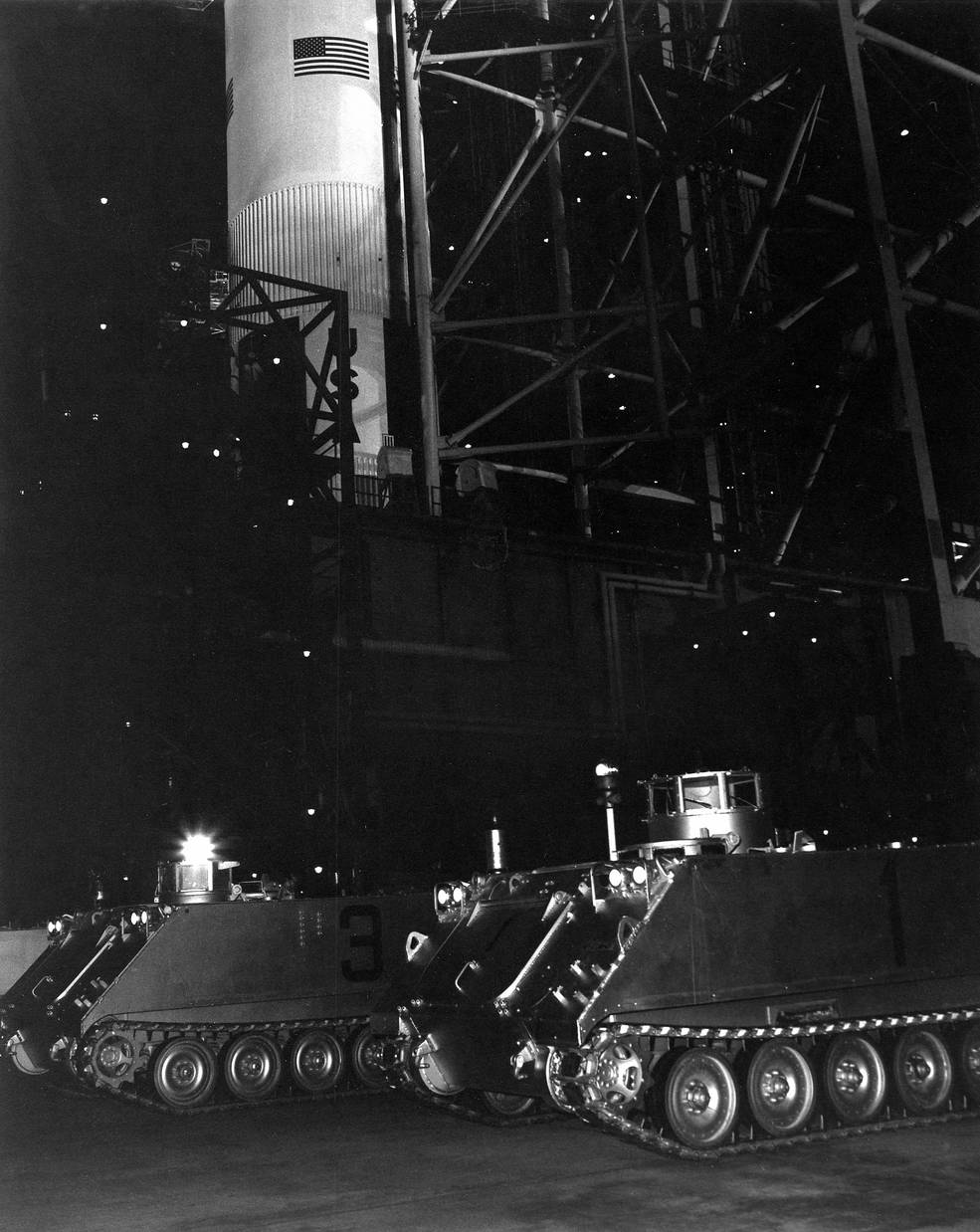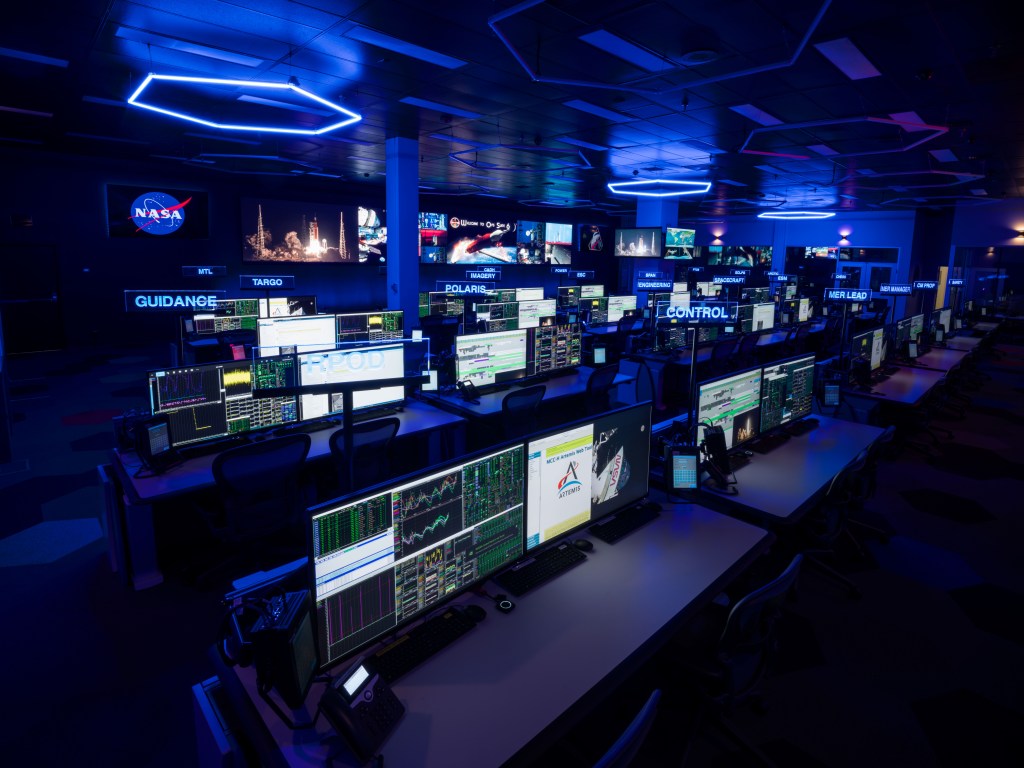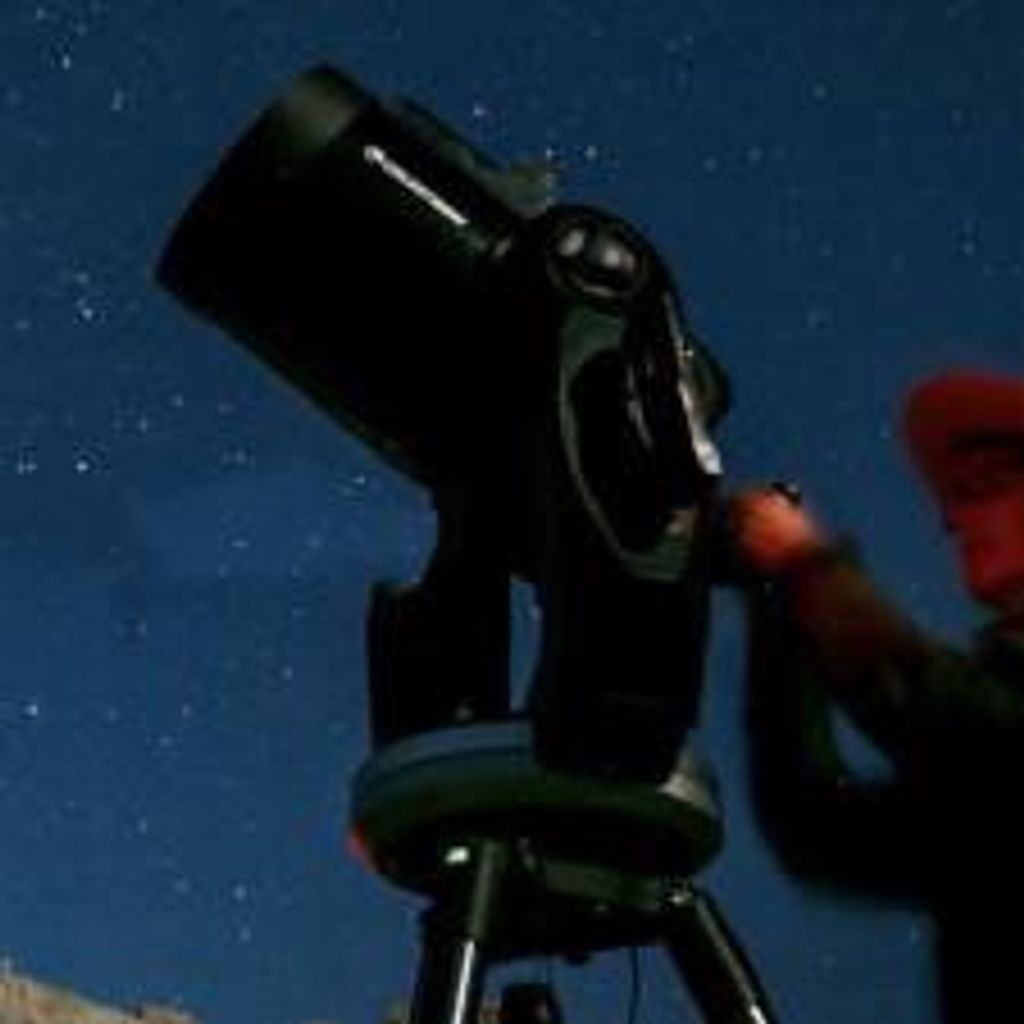In October 1972, only two months remained until the launch of Apollo 17, the final Apollo Moon landing mission, planned for December 1972. Astronauts Commander Eugene A. Cernan, Command Module Pilot Ronald E. Evans, and Lunar Module Pilot Harrison H. “Jack” Schmitt, a geologist, and their backups John W. Young, Stuart A. Roosa, and Charles M. Duke, continued training for various portions of their 13-day mission to the Taurus-Littrow region of the Moon. They continued their extensive geology training including a field trip to the San Bernardino Mountains in southern California. The astronauts rehearsed various aspects of their upcoming mission, including spacewalks, the lunar landing, and splashdown. Ground crews at NASA’s Kennedy Space Center (KSC) in Florida prepared the Saturn V rocket and the Apollo spacecraft for the flight to the Moon.



Left: Apollo 17 Command Module Pilot Ronald E. Evans, center, recieves lunar orbital geology
instruction from geologist Farouk El-Baz, right, as support astronaut Robert F. Overmyer
looks on. Middle: Apollo 17 Commander Eugene A. Cernan, left, and Lunar Module Pilot
Harrison H. “Jack” Schmitt during a training session in the Lunar Module simulator.
Right: Schmitt describes the Apollo 17 landing site during a
press conference in Washington, D.C.
A significant portion of the astronauts’ training involved lunar science, especially geology, a primary objective of this final Apollo mission. Cernan, Schmitt, Young, and Duke took their second-to-last geology field trip, a one-day visit to the Blackhawk Landslide formation in the San Bernardino Mountains in southern California’s Mojave Desert. Assisted by a team of geologists during their driving and walking traverse, the astronauts studied the landslide features in preparation for examining a similar feature at their Taurus-Littrow landing site on the Moon. Evans and Roosa, along with the other crew members, continued to receive instruction on orbital lunar geology from a team of geologists. At KSC, Cernan, Schmitt, Young, and Duke practiced the lunar surface excursions in the Lunar Surface Training Area, commonly known as the “rockpile,” an outdoor zone dotted with rocks and boulders to simulate the Moon’s terrain. Wearing full pressure suits, they practiced driving a training version of the Lunar Roving Vehicle, and rehearsed collecting rock and soil samples and deploying the various experiments of the Apollo Lunar Surface Experiments Package.


Left: Apollo 17 prime crew of Eugene A. Cernan, left, Harrison H. “Jack”
Schmitt, and Ronald E. Evans, still inside the Command Module, practice
post-splashdown egress procedures in the water tank in Building 260 at the
Manned Spacecraft Center, now NASA’s Johnson Space Center, in Houston.
Right: Cernan, left, Evans, and Schmitt, in the water at right, practice
exiting their spacecraft in the Stable 2 or apex down position.
Unlike previous crews, the Apollo 17 astronauts conducted splashdown recovery training in the water tank in Building 260 of the Manned Spacecraft Center (MSC), now NASA’s Johnson Space Center in Houston, rather than in the Gulf of Mexico. On Oct. 13, the backup crew of Young, Roosa, and Duke climbed aboard a training version of an Apollo Command Module in the water tank. The astronauts practiced exiting from the capsule onto life rafts. They also practiced exiting the spacecraft in its Stable 2, or apex down, position, requiring them to swim to the life raft. Cernan, Evans, and Schmitt completed their egress training on Oct. 20.



Left: Apollo 17 Commander Eugene A. Cernan preparing for a training flight in the Lunar
Landing Training Vehicle (LLTV) at Ellington Air Force Base. Middle: Cernan flying the LLTV.
Right: Cernan talking with reporters following his LLTV flight.
Apollo mission commanders used the Lunar Landing Training Vehicle (LLTV) at Ellington Air Force Base near MSC to train for the descent to the lunar surface. The LLTV simulated the Lunar Module’s (LM) flying characteristics, especially of the final 500 feet of the descent. Challenging to fly, Apollo commanders considered flying the LLTV essential to teach them the skills needed to pilot the LM to the lunar surface. Both Cernan and his backup Young completed several LLTV flights during October.



Left: At NASA’s Kennedy Space Center in Florida, the Saturn V rocket for Apollo 17 sits
on Launch Pad 39A, with the Mobile Service Structure protecting it. Middle: Three M-113
rescue vehicles parked near the Saturn V rocket during a nighttime crew rescue training
exercise. Right: Wearing protective gear, a fire rescue team member
boards an M-113 rescue vehicle.
At KSC’s Launch Complex 39, ground crews continued to prepare the Saturn V launch vehicle and Apollo spacecraft for the mission to the Moon. Engineers completed the flight readiness test of the LM on Oct. 4 and electrically mated the Command and Service Modules to the launch vehicle on Oct. 11, followed the next day by an overall electrical test. On Oct. 20, they completed the launch vehicle Flight Readiness Test, a countdown leading to a mock liftoff, with the rocket in launch configuration except for fuel loading. Since Apollo 17 planned to launch at night, the first night launch in U.S. human spaceflight history, close-out crews and fire rescue team members conducted a simulated crew rescue exercise under conditions of darkness.
To be continued…
World events in October 1972:
October 1 – Publication of the first reports of the production of a recombinant DNA molecule marked the birth of modern molecular biology methodology.
October 4 – The abbreviation “Ms.” is used for the first time in the “Congressional Record,” in reference to U.S. Representative Bella Abzug of New York. The other eleven women in Congress continued to be referred to as “Mrs.”
October 14 – The television series “Kung Fu” premieres on ABC.
October 16 – Direct deposit by electronic funds transfer makes its debut, as a service of several California banks.
October 27 – The Mariner 9 spacecraft’s mission, in orbit around Mars since Nov. 13, 1971, ends.
October 27 – Elton John releases his song “Crocodile Rock.”
October 28 – The A-300, the first Airbus airliner, makes its first flight in France.


























